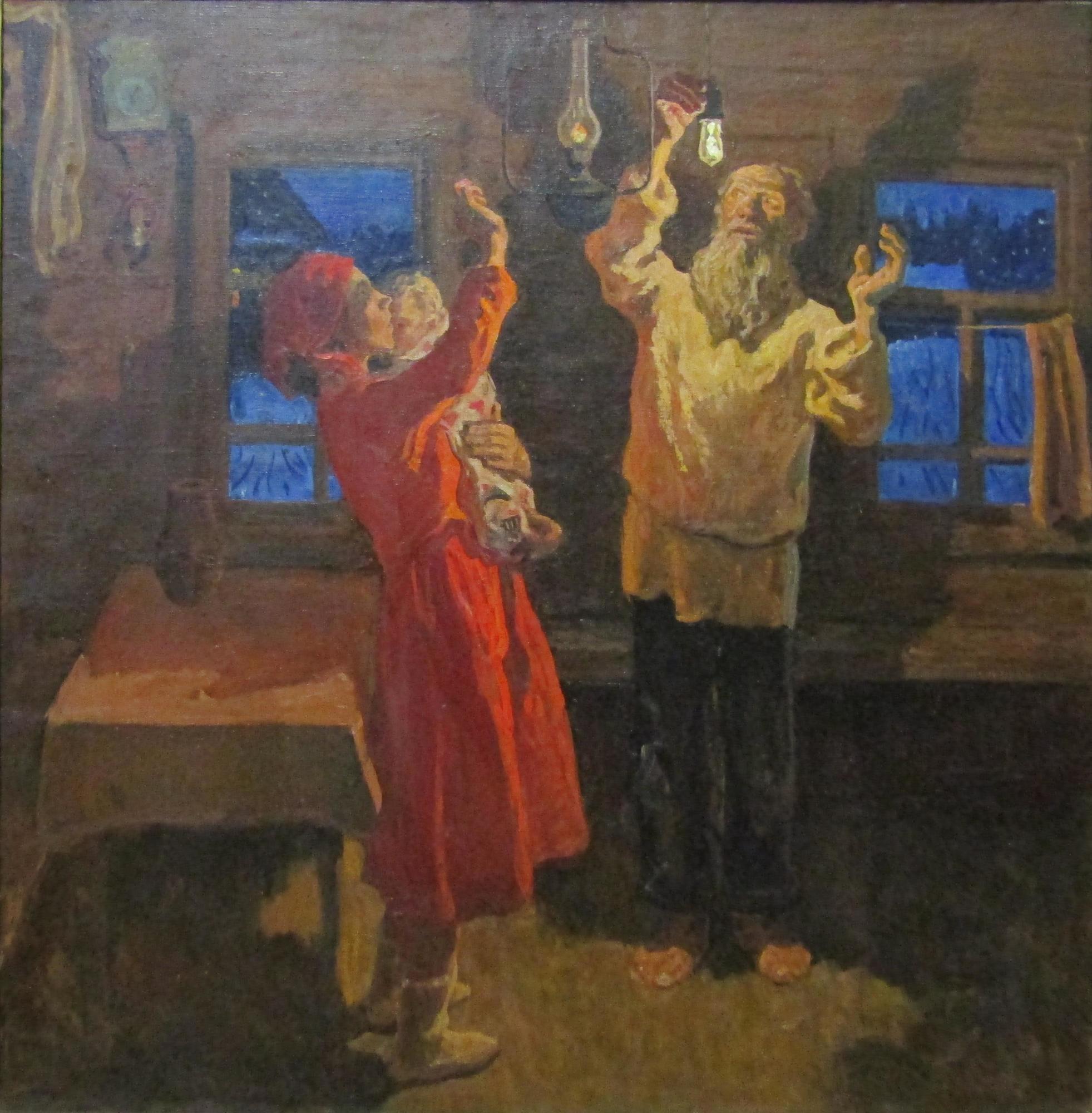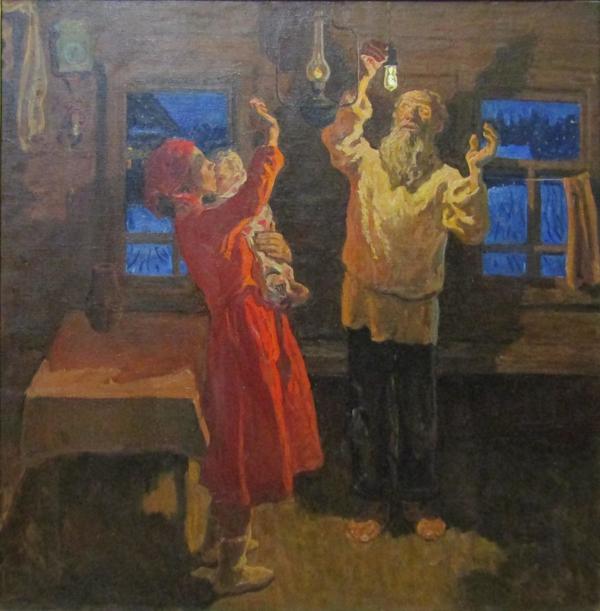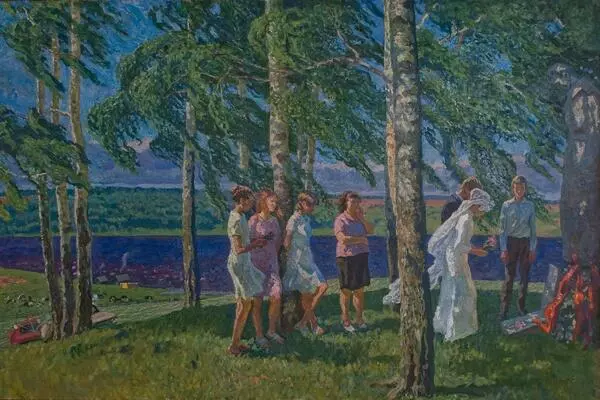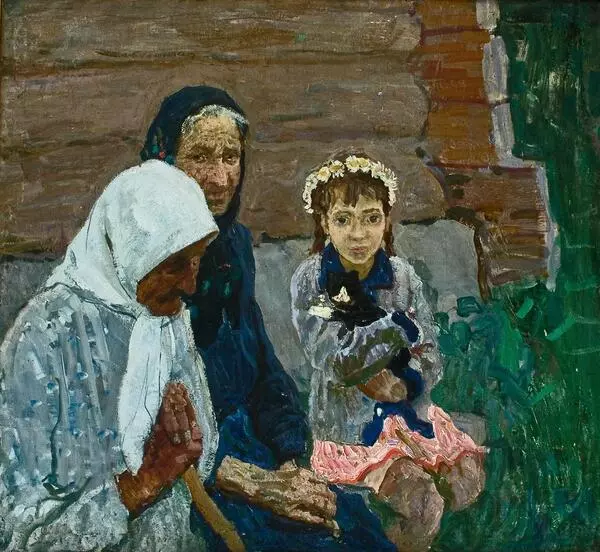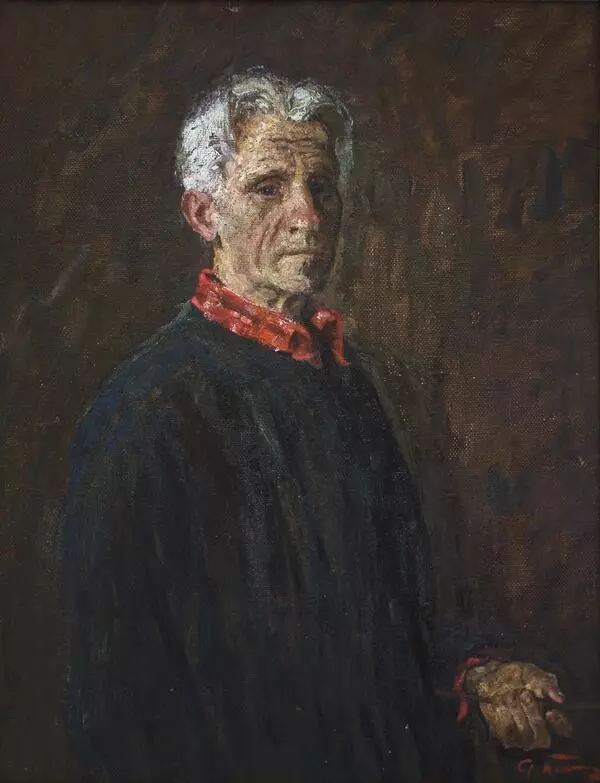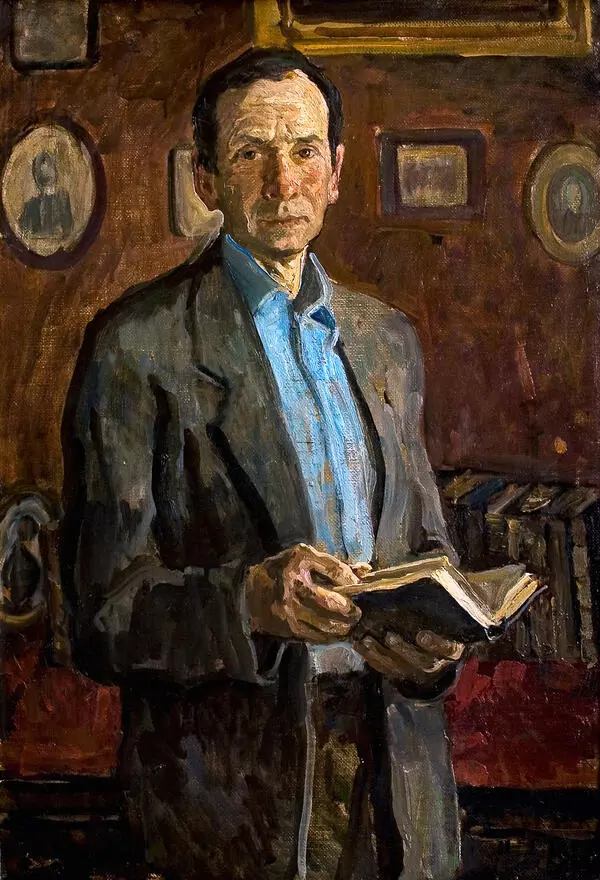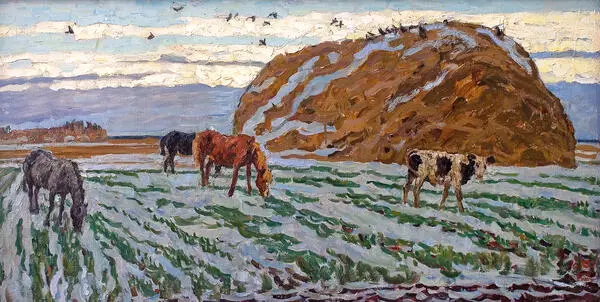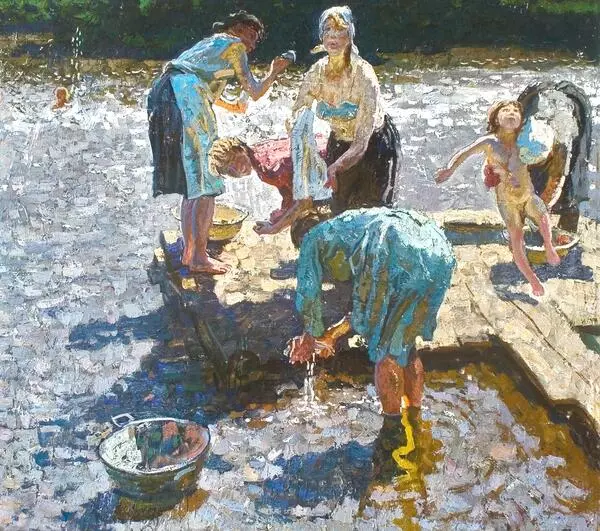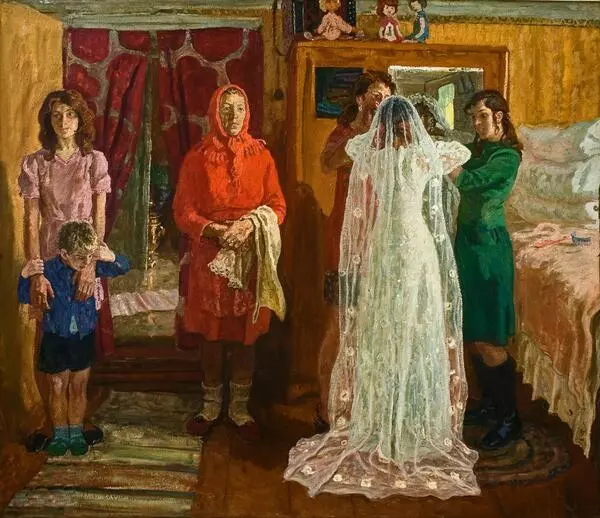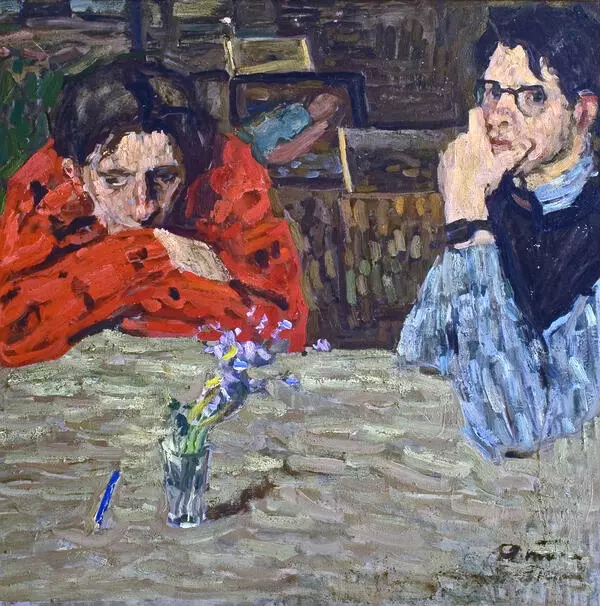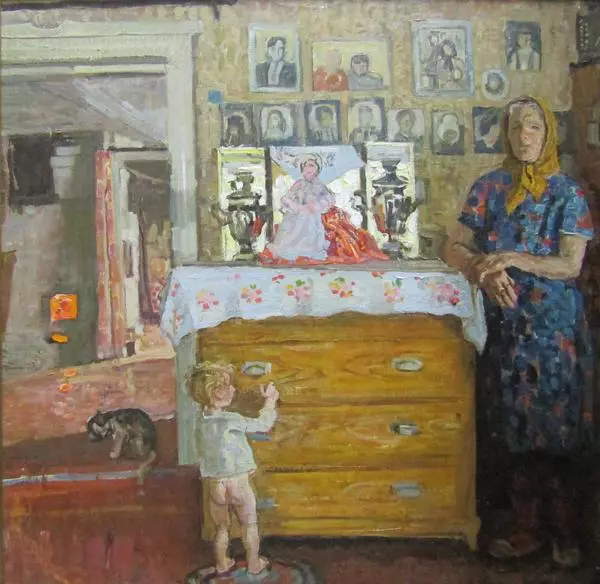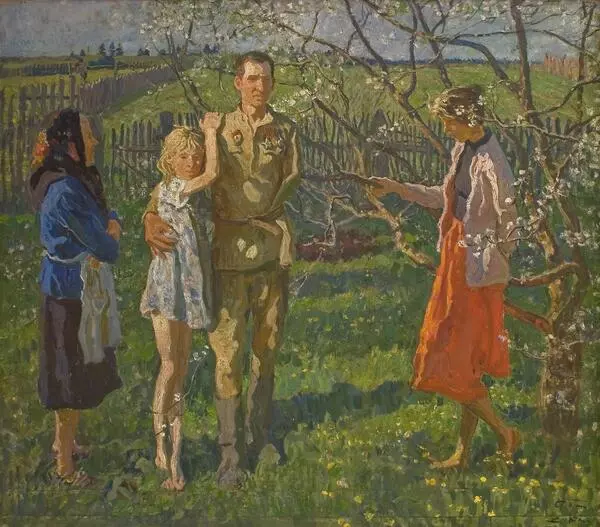Until the 1920s, the Russian village was lit with kerosene lamps. Their light was dim, and kerosene was expensive. Only with the adoption of the GOELRO plan for the construction of district power plants (the plan of the State Commission on Electrification of Russia) it became possible to organize permanent lighting of the peasants’ houses.
The picture shows a fragment of a typical country log house. The windows with simple curtains show a winter street. There’s an icon with a towel in the red corner and a weight-clock on the wall. The clock and a jug on the table, that’s all the peasants’ wealth. In the center of the canvas, there are the figures of two people comparing the brightness of the two lamps: the new electric and the old kerosene one. An old man with a beard, wearing a white shirt, is standing barefoot with his hands high. He is looking at the light bulb with his mouth open in amazement. There’s a young woman in a red dress and a kerchief next to him. She holds a baby in one hand, and with the other hand she is shading herself from the bright light.
Light was painted by brothers Sergei and Alexei Tkachev specifically for the Uzlovsky Museum of Fine Arts and Local History and represents a later version of the author’s work Light in the village. Sketches with similar subjects are stored in the warehouses of many Russian museums. The focus of attention of the artists who grew up in a village is on the daily life of the country people. The heroes of their paintings are their contemporaries, relatives, friends, neighbors. At the same time, the artists sought to create typical images that embodied the national character.
In their canvases, the Tkachev brothers, as realist artists, convey the ‘truth of time’, the history of their country. Light shows how important the electric lighting was for the whole country, and especially for its rural areas. It restructured the entire way of peasants’ life, boosted the national economy and allowed to start industrialization.
The Tkachev brothers are known as masters of village painting in the Russian fine arts of the second half of the 20th century. They are both people’s artists of the Soviet Union, full members of the Academy of Arts of the USSR, members of the Union of Artists of the USSR. In 1968, they won the Ilya Repin State Prize, and ten years later, in 1978, the USSR State Prize. Paintings by Sergei and Alexei Tkachev are in the collections of many domestic and foreign museums.
The picture shows a fragment of a typical country log house. The windows with simple curtains show a winter street. There’s an icon with a towel in the red corner and a weight-clock on the wall. The clock and a jug on the table, that’s all the peasants’ wealth. In the center of the canvas, there are the figures of two people comparing the brightness of the two lamps: the new electric and the old kerosene one. An old man with a beard, wearing a white shirt, is standing barefoot with his hands high. He is looking at the light bulb with his mouth open in amazement. There’s a young woman in a red dress and a kerchief next to him. She holds a baby in one hand, and with the other hand she is shading herself from the bright light.
Light was painted by brothers Sergei and Alexei Tkachev specifically for the Uzlovsky Museum of Fine Arts and Local History and represents a later version of the author’s work Light in the village. Sketches with similar subjects are stored in the warehouses of many Russian museums. The focus of attention of the artists who grew up in a village is on the daily life of the country people. The heroes of their paintings are their contemporaries, relatives, friends, neighbors. At the same time, the artists sought to create typical images that embodied the national character.
In their canvases, the Tkachev brothers, as realist artists, convey the ‘truth of time’, the history of their country. Light shows how important the electric lighting was for the whole country, and especially for its rural areas. It restructured the entire way of peasants’ life, boosted the national economy and allowed to start industrialization.
The Tkachev brothers are known as masters of village painting in the Russian fine arts of the second half of the 20th century. They are both people’s artists of the Soviet Union, full members of the Academy of Arts of the USSR, members of the Union of Artists of the USSR. In 1968, they won the Ilya Repin State Prize, and ten years later, in 1978, the USSR State Prize. Paintings by Sergei and Alexei Tkachev are in the collections of many domestic and foreign museums.
